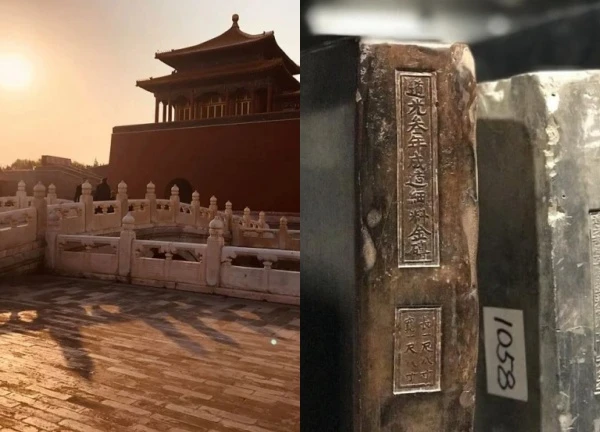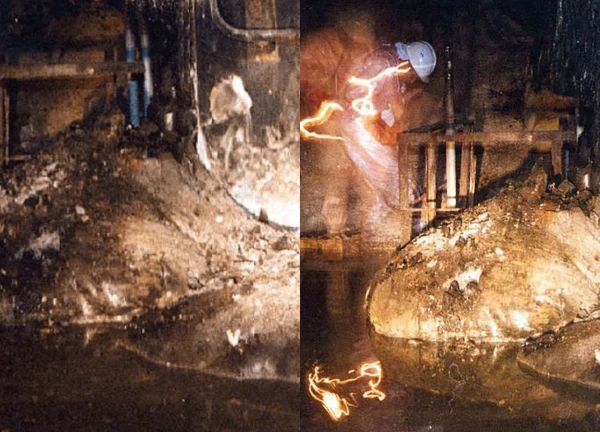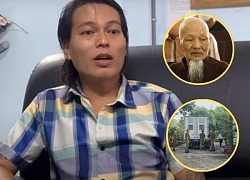More Horrifying Than the Movies: The Custom of Cutting Baby Girls' 'Butterflies' in Somalia, Close-up of Dirty Tools

3 | 0 Discuss | Share
Unlike animals, plants are usually unable to move. However, there is one plant that has the ability to move when wet, and that is Pili grass. Recently, social networks are buzzing with information about a "hair" that can move on its own, but many people think that it is Pili grass.
However, according to the Three Golden Pagoda, the relics of the Buddha are a noble and sacred religious symbol of Buddhism. The veneration of the relics of the Buddha is the ritual and religious belief of Buddhism. In the rule of law, such symbols, rituals and religious beliefs should be respected, insure and protection.
"The reporting of Myanmar monks offering false relics to Ba Vang Pagoda for Vietnamese people and Buddhists to worship is an act that hurts the symbols, rituals and religious beliefs of Myanmar monks and Buddhists; causing hurt to the feelings and good relations of Myanmar monks and Buddhists towards the country and Vietnamese Buddhism," the Three Golden Pagoda stated.
Although the Three Golden Pagoda denied it, it did not make people out of doubt. So what is pili grass that can move on its own?
What is Pili grass?
Many people wonder what pili grass is that can move on its own. According to the Vietnam Plant Data Center, Pili grass has the scientific name Heteropogon contortus, with very diverse names. In Vietnam, it is called heteroherbal, grass is different from beard.
The English names of Pili grass are diverse such as: Spear grass, speargrass, black speargrass, tanglehead grass, tanglehead, bunch speargrass, bunched spear grass, twisted beardgrass, tangle grass, piercing grass, pili grass, stick grass, wild oats.
Pili grass is a perennial tropical grass shrub grass whose native distribution includes South Africa, South Asia, Northern Australia, Oceania, and southwestern North America.
This species has also become a naturalized weed in tropical and subtropical regions of the Americas and East Asia. Plants up to 1.5 meters tall and can live well in most environments. Because of its high tolerance, pili grass grows quickly and spreads, making it an ideal ground cover grass.
Small spines are characterized by a thin and black upper half that looks like a spear. The lower half is hairy with many striking white hairs and seeds. Pili grass leaves are very thin, about 15-30 cm long, young leaves folded in the middle.
Thin, about 5-8 cm long inflorescences grow from the axils between the leaves, usually in pairs, one male or sterile. The seeds have thorns and spines that help them adhere deeper to the soil before germinating. Pili grass is a good grazing grass.
Pili grass is mainly used as animal feed, but is also used for roofing tents, carpet making, and paper making. This grass lives for about 5 years, has a shorter lifespan so it is important that the seeds are fertilized and produce new plants quickly before the mother plant dies.
Worth mentioning, Pili grass develops characteristic dark-colored seeds with a single long tip at one end and a pointed end at the other. The awning twists when dry and straightens when moistened, combined with branches capable of drilling seeds into the soil.
The name of Pili grass comes from Greek, where "heteros" means "different" and "pogon" means "beard". And "contortus" meaning "tangled" or "twisted" also refers to the "flexing" behavior of this grass.
Why Can Pili Grass Move?
According to scientists, like most grasses, the seeds of pili grass are dispersed by the wind. What's fascinating about this grass, however, is the way its seeds stick to the soil so they can start growing.
It is the appearance of rains, stagnant water on the dried seeds, that causes the sharp end of the seed to begin a twisting dance. This twisting motion will drill the seeds into the ground to be ready to germinate.
Thus, when encountering water, the hay particles (which look like black-brown hair) will twist and twist so that they can be inserted into the ground.
Therefore, as long as you water, soak this grass seed water, you can see the dance of Pili grass. This is an adaptive behavior of pili grass, not a "miracle".
The images of moving "Pili grass" that you see online are actually dried Pili grass seeds meeting water bending to be ready to "drill the soil" and come down to wait for germination.
In terms of use, in some places, people grow Pili grass for landscaping or as feed for livestock. Pili grass thickets also work to keep the soil resistant to erosion well. Native Hawaiians also used Pili grass for roofing.
However, pili grass is also a concern of the wool industry in many parts of Australia, because the seeds stick to the wool and can enter the skin, reducing the value of wool and even killing the sheep.
In the world, there have been recorded cases of pili grass seeds deep inside the bodies of animals through open wounds, causing the animals to become very painful and die not long after.

3 | 0 Discuss | Share

3 | 0 Discuss | Share

1 | 0 Discuss | Share

4 | 0 Discuss | Share

2 | 0 Discuss | Share

3 | 0 Discuss | Share

4 | 0 Discuss | Share

2 | 0 Discuss | Share

3 | 0 Discuss | Share

3 | 0 Discuss | Share

2 | 0 Discuss | Share

2 | 0 Discuss | Share










99 | 7 Discuss | Report